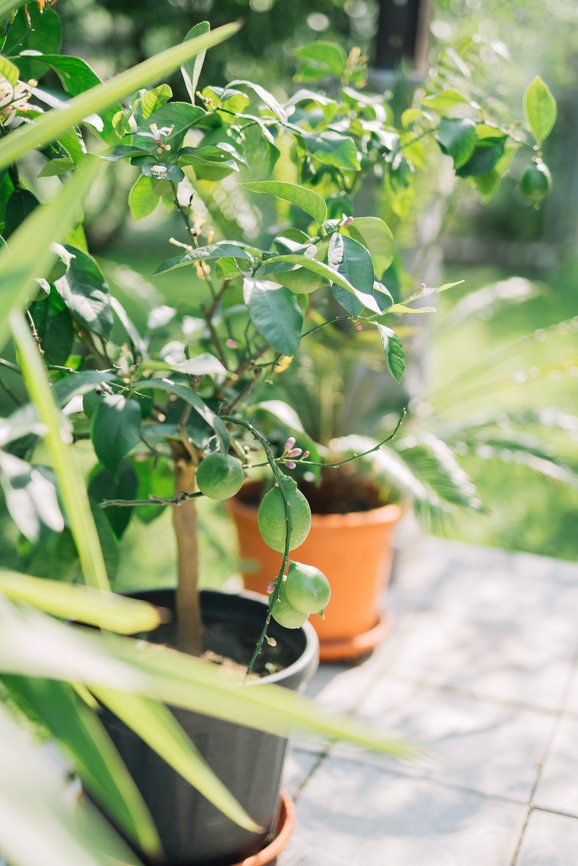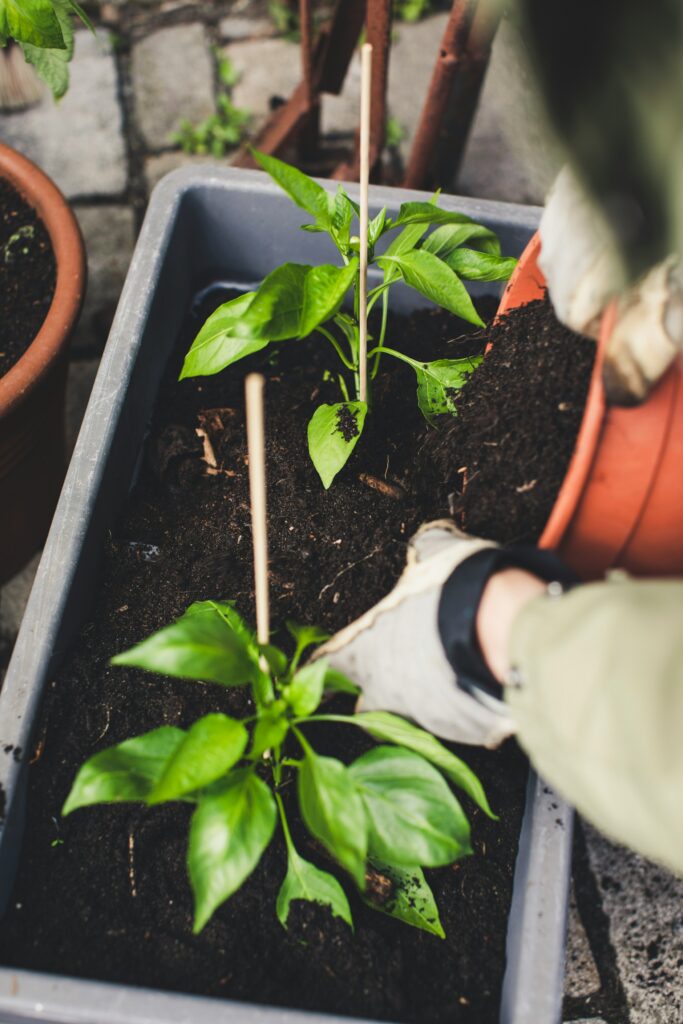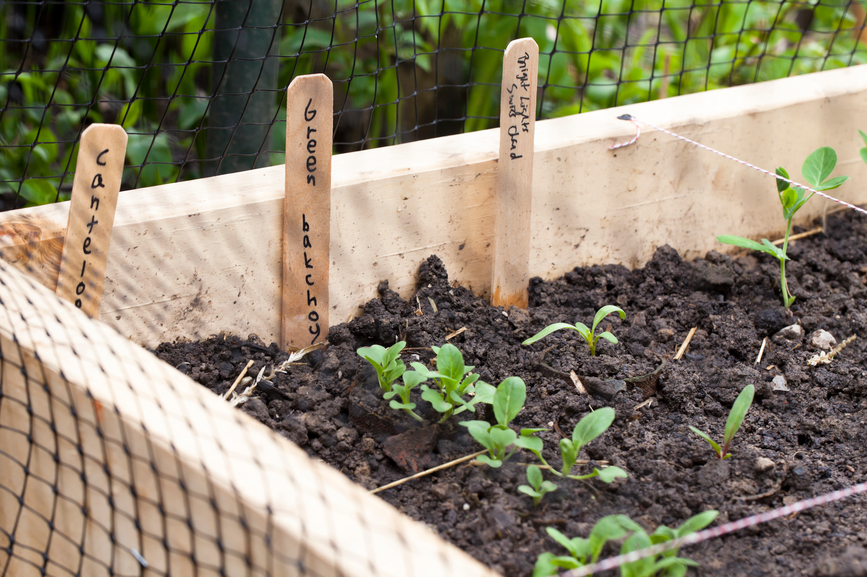Our roots run deep in the (wild) world of container gardening; to us, they conceptualize the beauty and power of nature in a compact and attainable way. If you’re short on space, time or even experience, the container garden is there to allow you to connect with nature, while overcoming many common limitations. So whether this is your first or fiftieth gardening season, rest assured that you can grow just about anything in a container. Here, we review three categories; fruits, vegetables and herbs, and a few favourite combinations!
Container Gardening: Fruits
Surprisingly, fruits are the most advanced container gardening undertaking. Even though they’re often overlooked due to this reason, we’re here to tell you it’s possible (even in our Canadian climate) and shouldn’t be intimidating. Our secret: it’s all about the varieties. Majority of common fruits grow on trees, shrubs and vines and are considered woody. It means each year new growth is added, both height and width. For that reason, they normally require substantial space. Whereas, dwarf and compact varieties, do not. While they still need larger containers (always slightly larger than their roots balls) and plenty of light, these varieties can handle and thrive in these semi-mobile environments. Plus, there’s nothing quite as satisfying as picking fruit straight from the source.
Our container gardening fruit favourites:
- Blueberries, blackberries and raspberries – Each take anywhere from 1-3 years before they begin fruiting, but once established they grow consistently and prolifically. They do require annual pruning, either in the Fall or Spring, where any dead/damaged growth or lack thereof is removed. Soils for each vary, with blueberries being the most particular and needing acidic soils to flourish.
- Citrus – Did you know that citrus species are the highest-value fruit crop? Long-living with an abundance of species/varieties, it’s easy to bring a touch of the Mediterranean to your home. We personally like: Calamondins (which look like oranges but taste like limes), Trovita Oranges (a perfect punch of vitamin C, and Eureka lemons (true lemons). Keep in mind all citrus species require at least 4 hours of direct full sun a day and consistent watering and feeding. Have an indoor placement prepared before committing, if your winters are too harsh for a year-round citrus.
- Strawberries – Unlike the other berries on the list, strawberries are herbaceous (non-woody stems) and grow with a trailing habit. Essentially this means they do incredibly well in hanging baskets. Keeping them elevated actually helps improve fruit quality and air circulation.
Vegetables
Growing edible plants is both thrilling and fulfilling. We look to veggies that have smaller root systems, are naturally compact and are lower maintenance. What we love with vegetable container gardening is that we can also plant companions together. Significantly this improves each vegetable, deters pests and allows for flavourful combinations within reach. An important note: many vegetables require a fair bit of water. The smaller your container, the more frequent your waterings. Our rule of thumb is to check container soils daily. When needed, aim for a long soak, over a superficial, quick drink. The former encourages, strong root development and sturdier plants. While you can buy all your plants at a nursery at the start of the season, consider starting a few of your seeds indoors.
Companions and combinations we adore:
- Tomatoes and Basil (+ cosmos) – A classic that smells just as good as it tastes. Be sure to support your growing tomatoes and reseed your basil every few weeks for a plentiful container. You can also add a splash of colour and pollinator intrigue by including cosmos in this arrangement.
- Savory Salads featuring Lettuce, Arugula, Basil, Dill, Marjoram – This arrangement will visually change over the course of the summer as lettuce and arugula prefer mild temperatures and can bolt if too hot. Plan to include the two at the beginning of the season and then remove to replant later in the season for one final round.
- Cucumber, eggplant/aubergine and kale (+ nasturtium and marigolds) – This combination creates a multi-level garden. The cucumber can be trellised, the eggplant then is supported by the cucumber and the kale can take the traditional container gardening role of filler. Consider adding nasturtium and marigold for both colour, interest and to help deter pests. Moreover, did you know that both of these flowers are edible? A summer addition that spices up any salad.
and Herbs
If you’re a culinary enthusiast or simply just getting started in the world of edible container gardening, herbs are one of our happy places. It feels rural, almost primal when cooking to quickly snip a few leaves or stems for a dish. It doesn’t get any fresher and well, any easier. This is a topic that’s near and dear to us, read up on our herb container gardening fundamentals if you’d like to start with a detailed review. If you have some experience, consider these combos:
- Kitchen Essentials (with those who love water): Parsley, Basil and Chives – These three require full-sun and prefer moist but not damp soil during their growing seasons. While parsley and basil are annuals, chives are perennials and will return each year.
- Kitchen Essentials (who those who don’t): Rosemary, Thyme and Oregano – While full sun is still essentials, be sure to give these herbs a drier environment. Avoid overwatering and ensure the top inches of the soil are dry prior to watering.
As you prepare for the upcoming container gardening season you may find other installments of The Wild Blog helpful. We recommend perusing Choosing the Right Containers and Creating a Spring Container Garden for extra background information and inspiration. We hope your gardens are lush and plentiful and that you truly get to enjoy reconnecting with nature. P.s., we’d love to connect, if you don’t already, be sure to follow us on Instagram and Pinterest!






